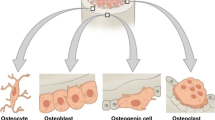Abstract
Hydroxyapatite formed from low temperature setting calcium phosphate cements (CPC) are currently been used for various orthopaedic applications. CPCs are attractive candidates for the development of scaffolds for bone tissue engineering, since they are moldable, resorbable, set at physiological temperature without the use of toxic chemicals, and can be processed in an operating room setting. However they may have mechanical disadvantages which seriously limit them to non-load bearing orthopaedic applications. The aim of the present study was to develop composites from polyphosphazenes and calcium deficient hydroxyapatite precursors to form poorly crystalline hydroxyapatite-polymer composites. Composites were formed from calcium deficient hydroxyapatite precursors (Ca/P–1.5, 1.6) and biodegradable polyphosphazenes, poly[bis(ethyl alanato)phosphazene] (PNEA) and poly[(50%ethyl alanato) (50%methyl phenoxy)phosphazene] (PNEA50mPh50) at physiological temperature. The results demonstrated that poorly crystalline hydroxyapatite that resembled the mineral component of bone was formed in the presence of biodegradable polyphosphazenes. The surface morphology of all the four composites was identical with a porous microstructure. The composites supported the adhesion and proliferation of osteoblast like MC3T3-E1 cells making them potential candidates for bone tissue engineering.
Similar content being viewed by others
References
J. O. Hollinger, and G. C. Battistone, Clin. Orthop. 207, 290 (1986).
M. Jarcho, Clin. Orthop. 157, 259 (1981).
W. E. Brown, and L. C. Chow, “Dental restorative cement pastes,” US patent no. 4,518,430 (1985).
R. A. Mickiewicz, A. M. Mayes, and D. Knaack, J. Biomed. Mater. Res. 61, 581 (2002).
K. Miyazaki, T. Horibe, J. M. Antonucci, S. Takagi, and L. C. Chow, Dent. Mater. 9, 41 (1993).
K. Miyazaki, T. Horibe, J. M. Antonucci, S. Takagi, and L. C. Chow, Dent. Mater. 9, 46 (1993).
C. Durucan, and P. W. Brown, J. Biomed. Mater. Res. 51, 726 (2000).
C. Durucan, and P. W. Brown, J. Biomed. Mater. Res. 51, 717 (2000).
H. R. Allcock in Chemistry and Application of Polyphosphazenes, edited by H. R. Allcock, (John Wiley & Sons, 2003).
R. Murugan, and S. Ramakrishna, Biomaterials, 25, 3829 (2004).
Acknowledgement
The authors acknowledge the financial support from NIH grant #AR46560. Dr. Cato T. Laurencin was previously the recipient of a Presidential Faculty Fellow Award from the National Science Foundation.
Author information
Authors and Affiliations
Corresponding author
Rights and permissions
About this article
Cite this article
Sethuraman, S., Nair, L.S., Singh, A. et al. Development of Novel Biodegradable Amino Acid Ester Based Polyphosphazene–Hydroxyapatite Composites for Bone Tissue Engineering. MRS Online Proceedings Library 845, 151–156 (2004). https://doi.org/10.1557/PROC-845-AA5.22
Published:
Issue Date:
DOI: https://doi.org/10.1557/PROC-845-AA5.22




